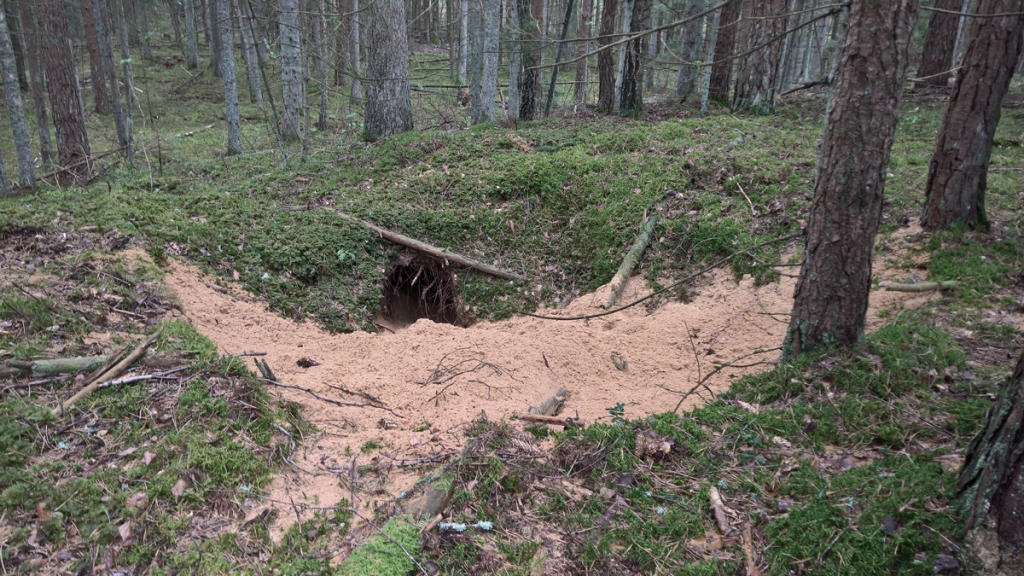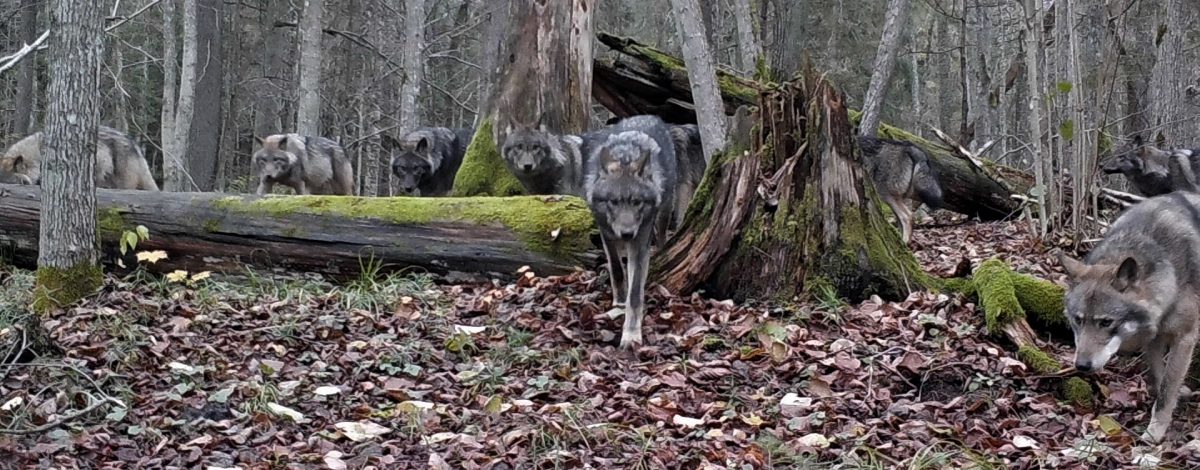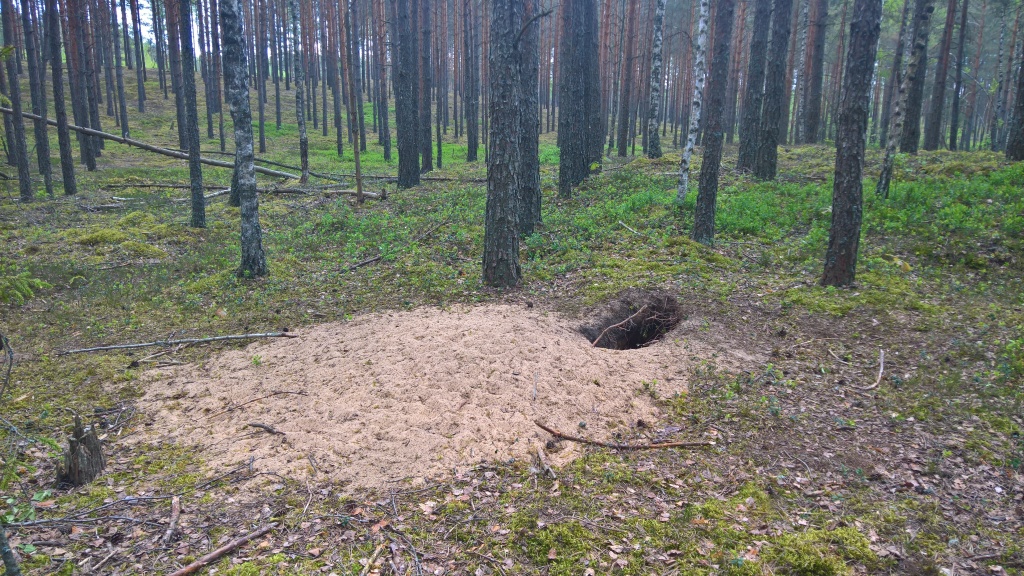Co-authors Irina Rotenko and Viktar Kasilovich
During the 2024 wolf denning season in Naliboki Forest, we initiated our study in early April and, as of early June, continue to employ camera traps to monitor three wolf families with pups. Our previous research (Sidorovich and Rotenko, 2019, along with several blog posts) indicated that lynxes, brown bears, and bison exhibit aggressive behavior towards wolf breeding. Additionally, red deer and elks have been known to attack wolf dens housing pups and those with roaming young pups. Regarding the aforementioned wild mammals previously identified as antagonistic to wolf breeding in Naliboki Forest, we have observed changes in their numbers and distribution compared to previous years.
Changes in Mammal Populations:
Bison and Red Deer: In spring 2024, we observed a notable increase in bison and red deer populations, while bear numbers remained relatively stable.
Lynx Decline: Lynx population in Naliboki Forest appears to have dramatically decreased. In January 2024, our census across approximately 2,000 square kilometers revealed only 32 lynxes (including adults, subadults, and juveniles). In the latter half of spring 2024, over two months of nearly daily work in the forest with 35-40 camera traps, we only managed to record three lynxes in an area of about 1,400 square kilometers. The current exact number of lynxes in Naliboki Forest is unknown, but our recent data indicates that there are no more than 15 lynxes, with 10 being a more realistic estimate. Previously, in 2019, we documented a decline in the local lynx population in Naliboki Forest due to a disease (Sidorovich, 2022). As for the recent decrease in lynx numbers during late winter and early spring, the cause remains unclear.
Changes in wolf denning conditions:
With fewer lynxes present, wolf denning became significantly safer in spring 2024. The primary threat shifted to the presence of numerous bison, red deer, and elks in the habitats. However, wolves found refuge in extended pine stands on aeolian sand soil, where these hostile ungulates were less common during spring.
Wolf Denning Details:
- We surveyed an area of approximately 1,400 square kilometers for wolf dens with pups.
- Historically, when the wolf population density was higher, 10-13 wolf breeding groups denned in this region. As of 2024, the number of wolves in Naliboki Forest and likely throughout Belarus has significantly decreased, with only 5 breeding groups identified in the study area. Among these, there are three double-breeding groups (that is, two females and one male) and two single-breeding pairs.
- We discovered 3 active dens with pups, and in two instances, we were able to study the wolf pups, which had litters of 5 and 8 pups respectively.
- Detailed characteristics of denning areas were documented for each of the five wolf breeding groups.
Before delving into specifics about each breeding group, we kindly ask our readers to consider supporting our research. Over the past seven years, we’ve primarily self-financed our study on wolves and other carnivores in Naliboki Forest, initially through ecotourism earnings and later, due to a significant reduction in such opportunities, by selling our assets. Currently, we’ve reached a financial limit and rely on our readers’ generosity. If you enjoy our work, please consider buying us a virtual coffee to keep our research going. Your support makes a significant difference!
Characteristics of wolf denning areas (April-May 2024)
First breeding group
In this denning area, there were numerous bison, red deer, and elks. Lynx and brown bears were also present. With such a variety of hostile mammals in the denning area, the last refuges for breeding wolves became pine stands on aeolian sands. The breeding wolves—comprising two mothers, a father, and two pup-sitters—chose self-made burrows for their dens.
Burrow-dens of these wolf breeders in April-May 2024.
The distance between the two mothers with litters varied from about 2 kilometers to several hundred meters. In the footage below, we observe the second mother with a smaller pup passing by the burrow-den of the first mother, whose pups were markedly larger.
One mother gave birth on April 20th, while the second mother delivered her pups in early May. Interestingly, during the 2023 denning season, these same breeders denned in a similar habitat type at distances of 1-2.2 kilometers. Most of their burrow-dens were destroyed by brown bears (see photo below).

Second breeding group
The mothers in this double-breeding group occupied contrasting habitats approximately 2.5-4 kilometers apart. The first mother denned in pine stands on aeolian sands, an area where hostile mammals were relatively rare.

The mothers in this double-breeding group occupied contrasting habitats approximately 2.5-4 kilometers apart. The first mother denned in pine stands on eolic sands, where hostile mammals were relatively rare. In contrast, the second mother chose a spruce forest with abundant treefalls. Some areas of the spruce forest were interspersed with black alder swamps, and nearby river valleys hosted numerous badger and red fox burrows. Initially, the second mother denned in a treefall but later relocated her pups to a red fox burrow without enlarging it. By that time, the pups were already 5-6 weeks old and could explore the logging area near the den. In the second mother’s denning area, all hostile mammals except brown bears and lynx were present daily.


Third breeding group
The third breeding group consisted of a couple. They denned among large fallen trees within a patch of mixed old-growth forest, encircled by a dense ring of ecologically poor coniferous stands. In this area, sightings of hostile mammals were uncommon. The pups were born on April 20th.
Forth breeding group
The fourth breeding group included at least two breeding females and their male, although it’s possible that more wolves were part of the group. Their denning area was located in an ecologically diverse valley near a medium-sized river, featuring a wide range of habitats. All the typical hostile mammals were found there, with the exception of bison; however, lynx and brown bears were infrequent visitors. The area contained numerous badger burrows, both large and small, as well as some red fox dens. Predominantly, the breeding wolves used expanded badger setts. The first female delivered her litter in the final days of March, while the second female gave birth to her pups in mid-April.


Fifth breeding group
The fifth breeding pair consisted of a couple. The female gave birth in late April. They made their den in a forest area dominated by spruce stands, surrounded by several small streams and swampy valleys. All potentially hostile mammals, except bison, occurred in the denning area but were relatively rare. The couple used self-made burrows for their den.






Good morning,
How can you explain the fall in the wolf population which went from 10-13 breeding packs to 5 (hunting? poaching? natural predators? others…? Thank you for your answer.
Roger MATHIEU (FRANCE)
Dear Roger, thank you for your question. The answer is straightforward. Outside the Naliboki Reserve, the persecution of wolves by increasingly well-equipped hunters is on the rise, alongside the construction of more roads in forested areas. Within the Naliboki Forest, the rapidly growing populations of red deer, bison, and tarpan-like horses, as well as the common presence of lynxes and brown bears until 2024, have nearly halted wolf reproduction by killing their pups. Further details can be found in a number of previous blog posts and our books (Sidorovich and Rotenko, 2019; Sidorovich). The books are available from Research Gate. Best wishes, Vadim.